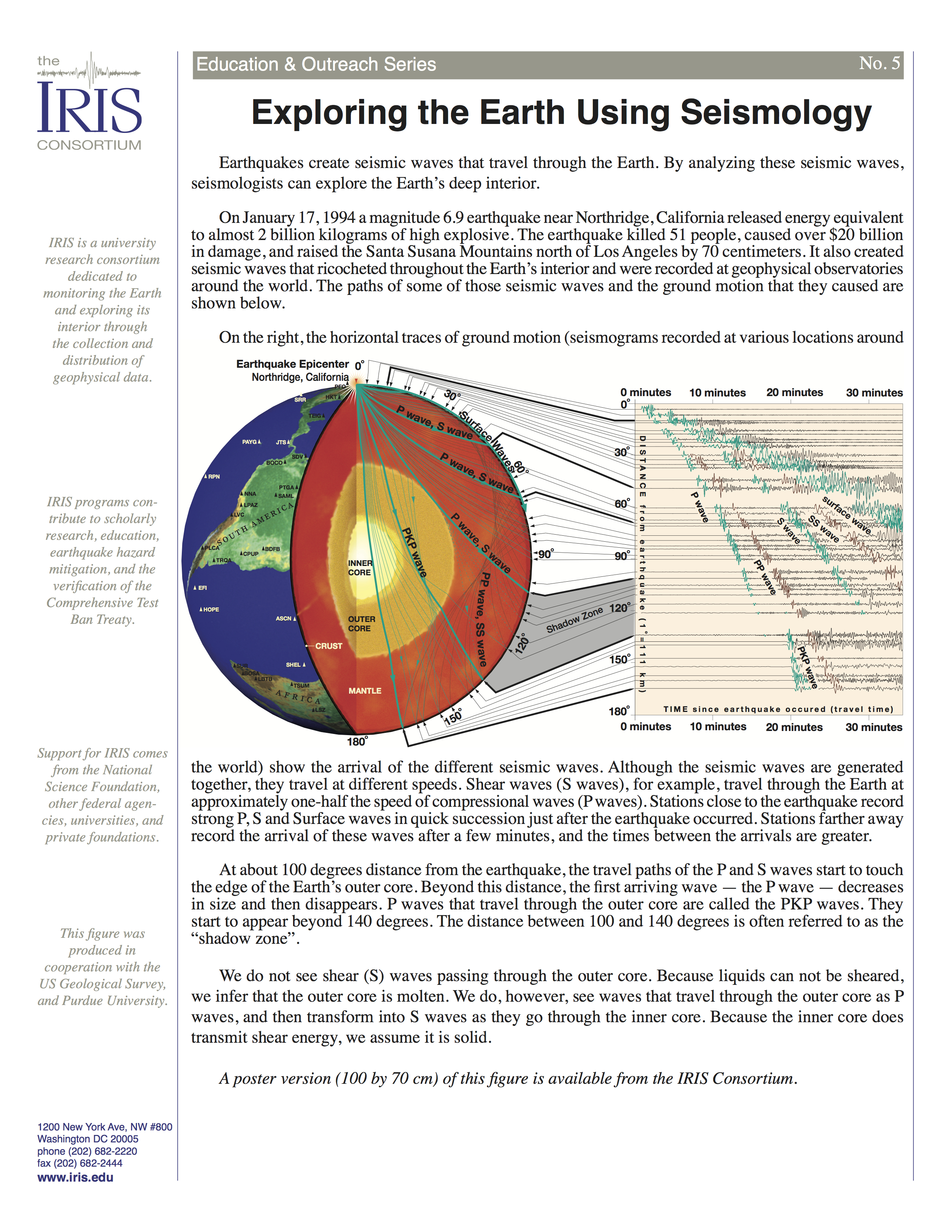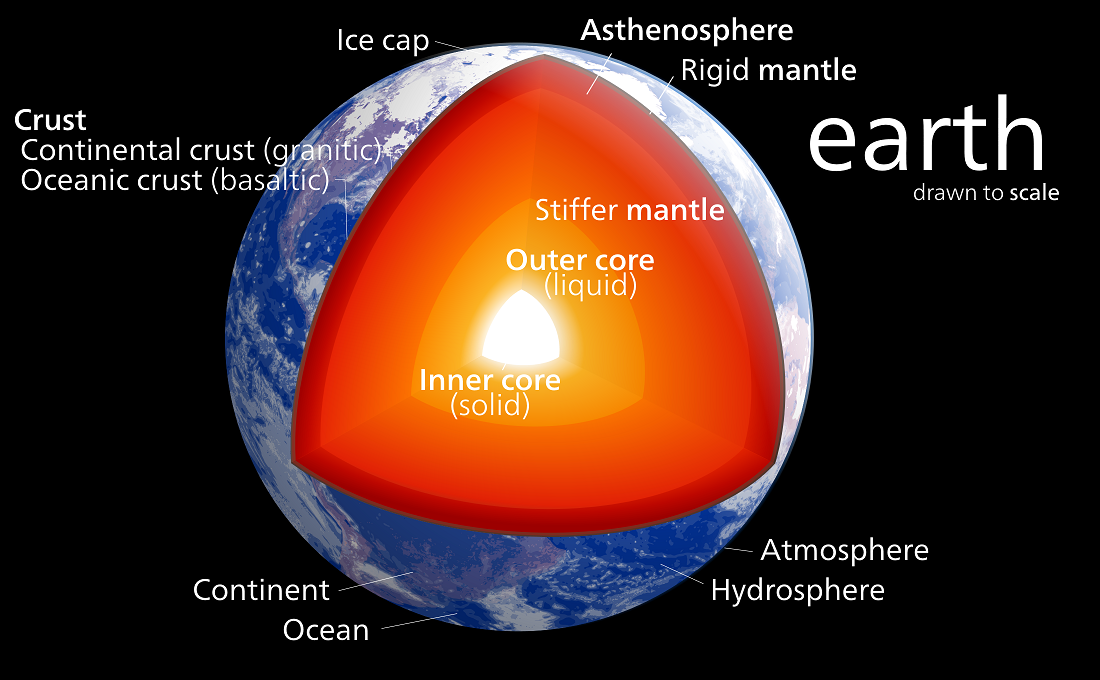How Do Scientists Study The Interior Of The Earth Using Seismic Waves?
Scientists use seismic waves to study the interior of the Earth by measuring the way they travel through the planet’s layers. Seismic waves are created naturally by earthquakes, and artificially by man-made sources such as explosions. When these waves travel through the Earth, they encounter different materials, such as rock, which affects the way they propagate. By studying how these waves travel through the Earth, scientists can learn about the composition and structure of its interior. Seismic waves have been used to map the Earth’s crust, mantle, and core, as well as to locate and study geological features such as faults and magma chambers.
What are Seismic Waves?
Seismic waves are a type of energy wave that travels through the Earth’s interior and is caused by earthquakes. Seismic waves are divided into two categories: body waves and surface waves. Body waves travel through solid Earth material, while surface waves travel along the Earth’s surface. Scientists use seismic waves to study the structure of the Earth’s interior, including its crust and mantle. By studying the properties of seismic waves, scientists can determine the composition and structure of the Earth’s interior.
Seismic waves are recorded by a seismograph, a device that detects, records, and measures changes in the seismic waves. Seismic waves can also be used to map geological structures and to study the Earth’s history. By studying the seismic waves, scientists can gain a better understanding of how the Earth’s interior has changed over time. Seismic waves can also be used to locate and study faults and other geological features.
Seismic waves are invaluable tools for scientists studying the Earth’s interior. By studying the properties of seismic waves, scientists can gain a better understanding of the Earth’s interior, its composition, and its structure. Seismic waves can be used to map geological structures, study the Earth’s history, and locate and study faults.
How Do Seismic Waves Help to Study the Earth’s Interior?
Studying the Earth’s interior has long been a fascination for scientists, and seismic waves are helping to make it a reality. Seismic waves are energy waves created by an earthquake or other seismic event. They travel through the Earth’s crust and are then reflected back to the surface. By studying these reflections, scientists are able to learn more about the Earth’s interior structure, composition, and temperature.
Seismic waves travel at different speeds in different materials, which allows scientists to determine the composition of the rocks in the Earth’s interior. They can also measure the temperature of the rocks, which can help them understand the Earth’s dynamics. By combining this data with other geological information, they can build a 3D image of the Earth’s interior.
Seismic waves can also be used to detect natural resources like oil and gas, and to predict volcanic eruptions and earthquakes. This helps to ensure the safety of people living in areas prone to these natural disasters. In addition, seismic waves allow scientists to map and explore the ocean floor, which can help them to understand the ocean’s biodiversity and other features.
By studying seismic waves, scientists are able to gain a better understanding of the Earth’s interior and how it works. This knowledge helps them to predict natural disasters, map the ocean floor, and find natural resources. Seismic waves offer a valuable tool for studying the Earth’s interior and its many mysteries.
How Are Seismic Waves Generated?
The study of the Earth’s interior has perplexed scientists for centuries, as it is not directly visible or accessible. To unravel the secrets held within, scientists look to seismic waves, which are generated by earthquakes, volcanoes, and other geological events. Seismic waves travel through the Earth, providing scientists with a means to study the interior structure and composition of the planet. By measuring the speed, intensity, and direction of the seismic waves, scientists can gain insight into the Earth’s core.
Seismic waves are created by the sudden release of energy, which can come from a variety of sources. Earthquakes, explosions, landslides, and other tectonic events generate seismic waves. These waves travel through the Earth, reflecting, refracting, and diffracting as they encounter different layers and densities within the planet. By measuring the speed and intensity of the seismic waves, scientists can gain a better understanding of the Earth’s interior structure.

What are the Different Types of Seismic Waves?
Studying the interior of the Earth is an incredibly complex task, one that has been made a little easier with the help of seismic waves. Seismic waves are vibrations that are produced by earthquakes or explosions and can be used to determine the Earth’s internal structure. While there are many types of seismic waves, there are two broad categories—body waves and surface waves—each with different properties and applications.
Body waves are the fastest type of seismic wave and can travel in all directions through solid, liquid, and gaseous materials, including the Earth’s interior. There are two types of body waves, primary waves (P-waves) and secondary waves (S-waves). P-waves are the fastest and can travel through both solid and liquid materials, while S-waves travel through solids only. Both types of body waves can provide scientists with valuable information about the Earth’s interior, such as its composition and temperature.
Surface waves travel on the Earth’s surface and are the slowest type of seismic wave. Unlike body waves, surface waves travel in a specific direction and are only able to travel through solid materials, such as the Earth’s crust and mantle. Surface waves can provide scientists with information about the Earth’s surface structure, such as its topography and features.
Studying the Earth’s interior using seismic waves is a complex task, but one that can provide scientists with valuable insight into our planet’s history, composition, and structure. By understanding the different types of seismic waves and their properties, scientists can gain a better understanding of the Earth’s interior and how it has evolved over time.
What Information Can be Revealed Through Seismic Wave Analysis?
Seismic wave analysis provides scientists with a wealth of information about the Earth’s interior, enabling them to understand the structure of the planet and its history. Through the analysis of seismic waves, scientists can determine the location of boundaries between layers of the Earth, such as the crust, mantle, and inner core. They can also measure the density, temperature, and composition of each layer, helping them to build a picture of the Earth’s evolution over time. Additionally, seismic wave analysis can reveal the age of a rock or sediment layer as well as any seismic events, such as earthquakes or volcanic eruptions, that have occurred in the past. This information is invaluable for scientists to better understand the Earth’s interior and its behavior.
Conclusion
In conclusion, scientists have developed a variety of techniques to study the interior of the Earth using seismic waves. Seismology is a powerful tool for understanding the Earth’s structure and composition, enabling scientists to better predict earthquakes, volcanic eruptions, and other natural disasters. Through the use of seismograms, seismographs, and seismometers, scientists are able to measure the arrival times and amplitudes of seismic waves, which are then used to map the Earth’s interior. Additionally, scientists are able to use seismic tomography to create a 3D image of the Earth’s interior. By studying seismic waves, scientists have been able to make groundbreaking discoveries, such as the Earth’s inner core, and are continuing to unlock the secrets of the Earth’s interior.
FAQs About the How Do Scientists Study The Interior Of The Earth Using Seismic Waves?
1. What are seismic waves?
Seismic waves are waves of energy that travel through the Earth, generated by seismic events such as earthquakes, volcanic eruptions, and even man-made explosions. These waves travel through the Earth’s interior, bouncing off boundaries between different layers of rock.
2. How do scientists study the interior of the Earth using seismic waves?
Scientists use seismometers to measure the seismic waves as they travel through the Earth. By recording the times and amplitudes of these waves, scientists can map out the Earth’s internal structure.
3. What does this information tell us about the Earth’s interior?
By studying the seismic waves, scientists can gain an understanding of the composition of the Earth’s various layers, as well as the temperature and pressure of the Earth’s interior. This information can help scientists better understand the processes that occur within the Earth.
Conclusion
Scientists study the interior of the Earth using seismic waves to gain insights into Earth’s structure. Seismic waves travel through the Earth’s interior and can be detected by seismometers on the surface. By studying the characteristics of the waves and how they interact with different materials, scientists can infer information about the composition and density of the Earth’s interior. This information can be used to better understand Earth’s evolution, to predict earthquakes, and to locate potential sources of energy. Through the study of seismic waves, scientists are able to better understand the interior of our planet and the forces that shape it.




